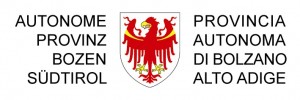
WHERE AND WHY DO WE ACT
Rasuwa, on the border with the Tibet Autonomous Region, is one of the poorest areas in Nepal and worst affected by the April 2015 earthquake. Most of the men have migrated to the Gulf countries to find work and send money to their families, leaving the women alone to look after their homes, land and children. Despite this rural exodus, which affects about 35% of men, Nepalese society remains strongly patriarchal and traditionalist. Even today, rural women in Nepal are illiterate and live in a socio-economic and cultural condition of subordination to men. The right to land is denied and they rarely have their own income, even though they work much harder than men. They take care of everything, getting up before dawn to clean the house, doing the heaviest work in the fields, raising livestock, cooking, educating their children.
The project addresses the problem of scarce access to land and the lack of models for the use of natural resources that are sustainable and capable to ensure a decent standard of living for communities in the buffer zones of Langtang Park. The local communities live, almost exclusively, on the primary sector, on agricultural productions for self-sustenance and limited livestock activities.
In the buffer zones, marginal lands are widespread. They have intensively exploited in the previous decades and now they are in a condition of poor fertility (both from a biotic and chemical-physical point of view) with minimum soil thickness and reduced by decades of accelerated erosion. These areas are now highly prone to desertification, the soil conditions affect normal agricultural and pastoral production.
But this is only the second of the risks that the increase in marginal areas entails: the first is the cancellation of all ecosystem services that depends on mountain reservoirs that preserve the hydrological balances, the biodiversity. They control the rainwater flows, reduce the risk of floods and landslides in the highly inhabited valley floors.
PROJECT OBJECTIVES
For this reason, the planned activities foresee to restore the forest cover of the marginal areas and improve the living conditions of the buffer zone communities through the development of opportunities to increase income (beekeeping, agricultural production resilient to climate change, production for animal nutrition, reforestation of marginal areas).
The actions planned will favor the development of a more diversified production model, resistant to the limits of the environment and the threats due to climate change.
MAIN ACTIVITIES
1. Identification and selection of women and training on land law, financial literacy
2. Training on nursery management, business plan and mediation
3. Selection of 60 families and training of 60 beekeepers (distribution of hives and beekeeping kits)
4. Identification and training of 60 farming families and distribution of 3,000 plants for animal food
5. Creation of 4 nurseries with 4 irrigation systems and distribution of kits for planting and starting nurseries
6. Launch of a reforestation campaign in the buffer zones of Langtang Park and distribution of 7000 reforestation trees
ACTIVITIES IN ITALY

Organization of a photographic exhibition with photographs taken during the implementation of the activities and projection of videos for sharing the results of the project and raising awareness on the issues of food security, poverty, migration, Nepalese female condition, environmental conservation and climate change.
Click on the picture to access the virtual exhibition!
In Nepal Stories, the reportage by Thibault Gregoire tells the life of Nepalese women – who are slowly building their self-esteem and autonomy – and the everyday life of rural communities in Nepal.
BENEFICIARIES
The total direct beneficiaries in Nepal are 1380; in Italy, the direct beneficiaries of the awareness-raising activities are estimated at around 1000 people. Indirect beneficiaries of the project are the inhabitants of the Rasuwa district: 44,000 individuals. Indirect beneficiaries of the awareness-raising activities in Italy are the inhabitants of the municipality of Bolzano (about 107 519 people).



